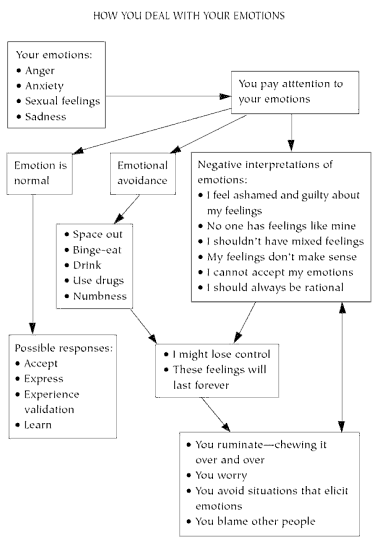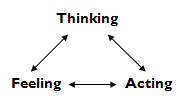 Emotion regulation is a core dialectical behavior therapy (BDT) skill. In some earlier posts about emotion regulation we learned that the ways in which we often try to deal with emotions—such as trying to problem solve, control, or avoid them—tend to be counterproductive. We also looked at a number of more helpful ways we can deal with our emotions such as validation and acceptance. The video below puts this altogether and explains the DBT skill of emotion regulation. To learn more about emotion regulation, please check out my free DBT Skills Course.
Emotion regulation is a core dialectical behavior therapy (BDT) skill. In some earlier posts about emotion regulation we learned that the ways in which we often try to deal with emotions—such as trying to problem solve, control, or avoid them—tend to be counterproductive. We also looked at a number of more helpful ways we can deal with our emotions such as validation and acceptance. The video below puts this altogether and explains the DBT skill of emotion regulation. To learn more about emotion regulation, please check out my free DBT Skills Course.
DBT Skills: Emotion Regulation and Acceptance
DBT Skills: Emotion Regulation and Body Sensations
DBT Skills: Opposite Action and Emotion Regulation
DBT Skills: Emotion Regulation and Distress Tolerance
In his book, The Worry Cure, Robert Leahy provides a flow chart that summarizes the various ways we can deal with our emotions and the results are tend to follow. The chart highlights undesired results that tend to arise when we try to avoid our emotions in various ways, or when we invalidate our emotions by telling ourselves that they are wrong.

Leahy notes that dealing with our unpleasant emotions by trying to avoid or suppress them “reflects the belief that you cannot handle emotions, that emotions will overwhelm you, and that your emotions do not make sense.” This leads to negative consequences such as worrying and ruminating and more unpleasant emotions.
People who engage in these ways of dealing with their emotions tend to “feel they have less control over their emotions in a display less acceptance of their feelings, and they blame other people for their feelings.” When emotions feel like they are beyond your control, they become more difficult to tolerate and seem more overwhelming.
The chart also shows that when we don’t fight our emotions, and are able to see our emotions as normal, we can then engage in more positive ways of interacting with our emotions such as accepting, expressing, validating and learning from them, all of which are ways of bringing mindfulness to our emotional experience. These positive ways of handling difficult emotions makes these emotions manageable, and allows us to experience them without becoming distressed and overwhelmed.
Everybody experiences unpleasant emotions. It’s a natural part of our existence. The good news is that there are ways we can interact with these emotions that make them manageable, and allow us to experience them as a normal part of living, rather than as overwhelming burden from which we need to escape.





I really enjoy your posts. Keep updating your blog, it’s a great read.
Really great info on how to deal with emotions. Appreciate it.
its about time someone finally spoke out about the psychology of emotions. everytime i try to explain to either my friends or my folks that there’s a huge difference between “rationalizing my emotions” and “controlling my emotions”, they never seem to get this. this just puts it into a simple more understandable point of view and i completely agree 100% with everything stated here. psychology was my major for only 2 years in college before i dropped it for personal reasons, but that hasn’t stopped me from constantly taking acknowledgement and observations into how people react to situations, places, and things, what cuases them to react, how they’re dealing with it etc etc. i have also spent nearly my entire life constantly re-evaluating how i think, react, and feel and its all boiled down to whats in this article you have posted. thank god finally someone agrees with me that emotions can not be controlled, but actions can.
Thanks for your comment Elizabeth. I think one of the best discussion on how to treat emotions is in “Depressed & Anxious: The dialectical behavior therapy workbook for overcoming depression & anxiety” by Thomas Marra. You might also want to check out http://regulatingemotions.com/